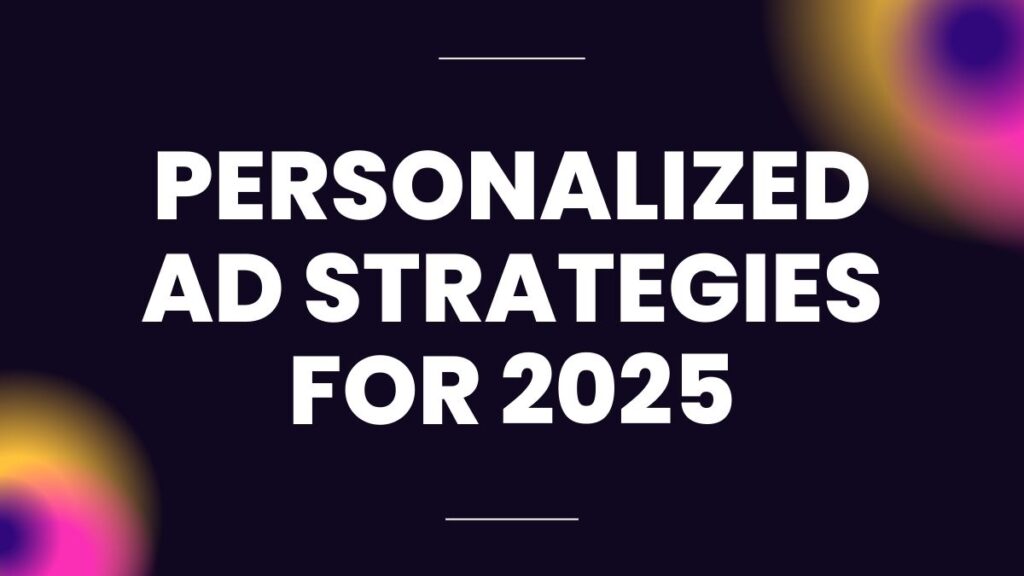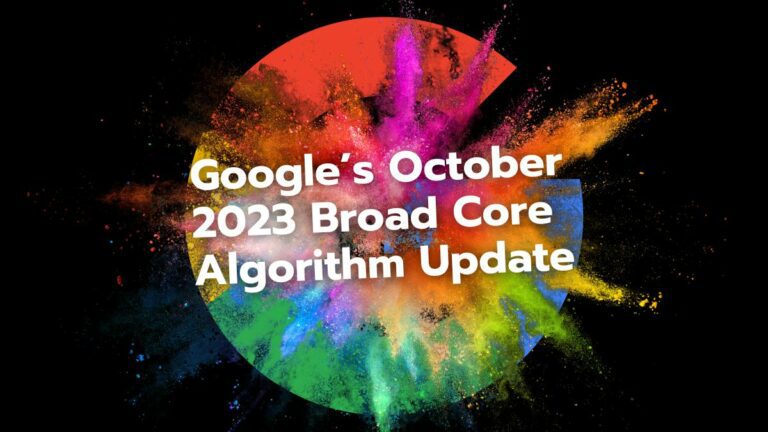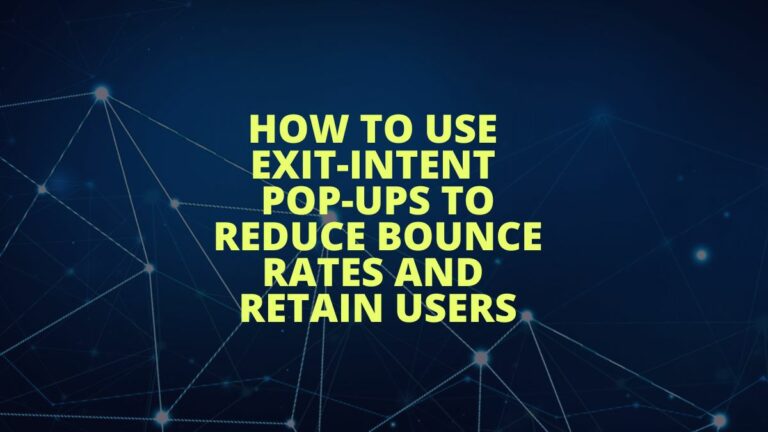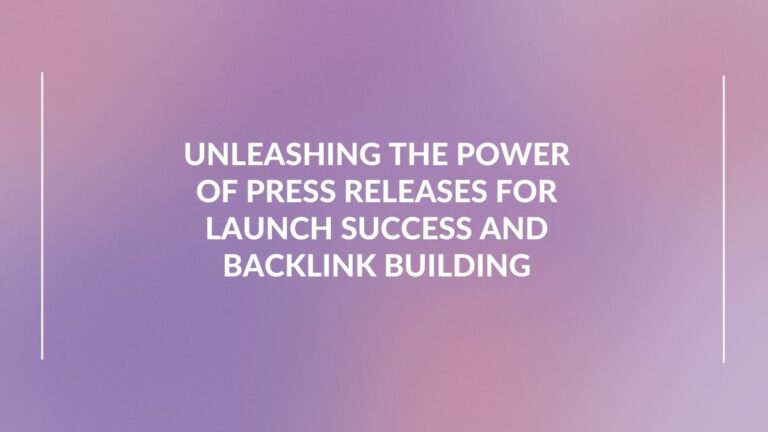
Personalized Ad Strategies for 2025
The days of one-size-fits-all advertising are over. In 2025, people expect brands to know them, understand their preferences, and deliver ads that feel like they were made just for them. This shift isn’t just a trend—it’s a must if businesses want to stay competitive. Personalized ads aren’t just about pushing products; they create real connections and build customer loyalty.
But what does it take to build a truly effective personalized ad strategy? It’s more than just adding someone’s first name to an email. The key is using data-driven targeting to craft ads that feel natural, relevant, and perfectly timed.
Here’s how businesses can master personalized advertising in 2025.
Data Is Everything
At the heart of individualized marketing is data. The more a business knows about its audience, the more it can tailor ads to specific interests, behaviors, and needs. But collecting data isn’t enough. Brands need to use it responsibly to build trust.
- First-party data is gold – With stricter privacy rules, relying on first-party data (info collected directly from customers) is the safest and most effective approach.
- Behavioral tracking makes ads relevant – Understanding what customers do on your website, what they buy, and how they engage with past ads helps you send offers that actually matter to them.
- Transparency builds trust – People are more willing to share data when they know why and how you’re using it—especially if it means better deals, smarter recommendations, and a smoother experience.
If a brand can balance data collection with consumer privacy, they’ll win more customers and keep them coming back.
Hyper-Personalized Content Is the Future

Nobody likes generic ads anymore. People expect brands to show them personalized content that actually speaks to their interests. That means going beyond broad customer segments and creating truly customized experiences.
- Dynamic ads – These ads adjust in real-time based on what a person is doing online. Instead of seeing a random product, they see something they actually care about—right when they’re most interested.
- Smart product recommendations – If a customer has been browsing sneakers, show them running shoes, not high heels.
- Tailored ad experiences – Instead of blasting the same message to everyone, change the text, images, and even the call-to-action based on what a user is most likely to respond to.
The brands that get hyper-personalization right will see more clicks, more conversions, and fewer wasted ad dollars.
Personalized Emails and Messages Still Work—If You Do Them Right
Even with social media and new ad platforms, personalized emails are still one of the most powerful marketing tools. Why? Because when done right, emails feel personal, not promotional.
- Abandoned cart emails – A simple reminder (or a small discount) can bring back lost customers.
- Special offers based on past purchases – Instead of a generic discount, send deals that match what they actually buy.
- Personalized subject lines – Emails that mention the recipient’s name or interests get way more opens than generic ones.
This also applies to personalized messages on social media. If a brand can make interactions feel one-on-one rather than mass-produced, they’ll see way more engagement.
Real-Time Personalization Keeps Customers Engaged
In 2025, real-time personalization is the game-changer. Instead of relying on past data, brands can adjust their ads on the spot based on how customers interact with content.
- Live shopping recommendations – Imagine browsing an online store, and a pop-up suggests the perfect add-on based on what’s in your cart.
- Location-based offers – A coffee shop sends a discount notification when you’re walking nearby.
- Exit-intent pop-ups – If someone is about to leave your site, a last-minute deal might convince them to stay.
When brands can react in the moment, customers are far more likely to pay attention—and take action.
Social Media Personalization: A Must-Have
Social media isn’t just for connecting with friends—it’s a huge opportunity for personalized ads. Platforms like Instagram, TikTok, and Facebook already use advanced data analysis to show people ads they’re interested in.
- Ads based on user activity – Ever notice how you look at a product once, and suddenly it’s everywhere? That’s data-driven targeting at work.
- Influencer-driven experiences – Partnering with influencers who match your audience creates trust-driven, organic recommendations.
- Interactive content – Polls, quizzes, and chatbots make ads feel more like conversations, not sales pitches.
For digital marketers, social media personalization isn’t optional—it’s the difference between ads people scroll past and ads they click on.

Personalization and Customer Loyalty Go Hand-in-Hand
Personalized advertising isn’t just about making sales but building long-term customer relationships.
- Loyalty programs with personalized rewards – A generic points system is fine, but customized rewards based on purchase behavior? That’s what keeps people coming back.
- Post-purchase engagement – Sending follow-ups, recommendations, or even a simple thank-you message makes customers feel valued.
- Smart customer service – If a brand remembers past interactions and offers personalized support, customers are more likely to trust and stick with them.
A well-executed personalized marketing strategy can turn casual buyers into lifelong fans.

The Future of Personalized Advertising
As we move deeper into 2025, personalized advertising isn’t just a nice-to-have—it’s the foundation of successful marketing. Brands that embrace data-driven marketing strategies will thrive, while those that stick to outdated, generic methods will struggle to stay relevant.
The key takeaways?
- Focus on long-term relationships – The goal isn’t just sales; it’s customer loyalty.
- Use data wisely – People want ads that make sense for them but also want brands to respect their privacy.
- Create truly personalized content – If an ad feels generic, it won’t work. Individual customers expect more.
- Leverage real-time personalization – The right ad at the right time is far more potent than a mass-blasted campaign.
- Invest in social media targeting – Platforms like Instagram and TikTok already know what users want—innovative brands use that data to their advantage.
Digital Results would be happy to help you with your digital marketing needs. Get in touch for a free 30-minute consultation—one of our experts will walk through how we can help optimize your search engine optimization (SEO).
Ready to Grow Your Search Engine Results?
Let Digital Results assist you in your SEO strategy and help
deliver the search engine results you need.






